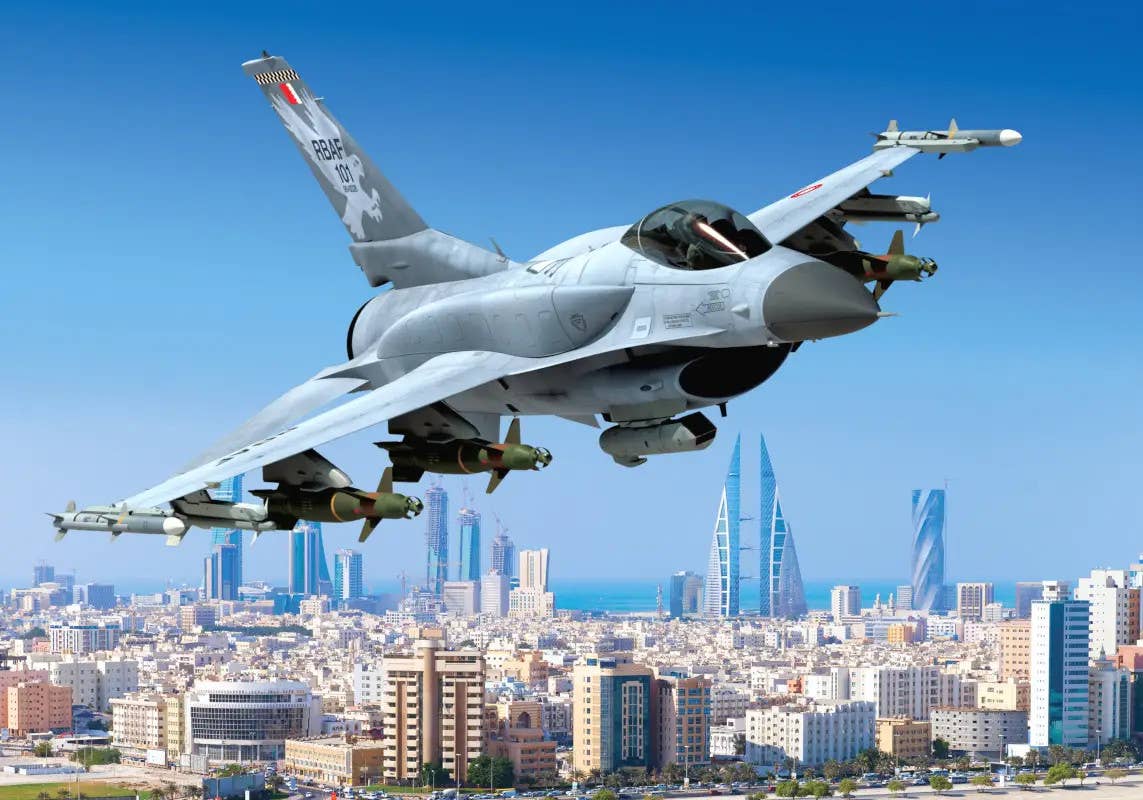Lockheed Martin has rolled out the first F-16 of the Block 70/72 configuration from its Greenville, South Carolina, facility. The warplane, one of 16 the company is producing for Bahrain, is scheduled to make its maiden flight in early 2023.
The first F-16 Viper, exported to Bahrain through the Foreign Military Sales (FMS) program, will be accepted by the US government in the first quarter of 2023 and tested in flight at Edwards Air Force Base in California.
The company tweeted a short marketing video with the caption, “Guess who’s back.”
The roll-out was hailed as “an incredible accomplishment,” particularly for the Greenville, South Carolina factory, by OJ Sanchez, Integrated Fighter Group Vice President and General Manager at Lockheed Martin, who added, “more to come and eyes forward!” in a post on LinkedIn.
Guess who's back. ? pic.twitter.com/TNsfxeeIqe
— Lockheed Martin (@LockheedMartin) November 21, 2022
In 2017, Lockheed Martin announced that it would shift F-16 production from Fort Worth, Texas, to Greenville, South Carolina, to make room for expanding F-35 manufacturing activities.
Since then, demand for the F-16’s advanced Block 70/72 variants has increased dramatically, leading to sizable orders for the aircraft.
The assembly line of Greenville already has a backlog of 128 F-16s, including the 16 for Bahrain. Lockheed Martin noted that Bahrain, Slovakia, Bulgaria, Taiwan, and “one other” are among the five nations that have placed orders for Block 70/72.

Jordan has also inked a letter of offer and acceptance for purchasing eight aircraft, which, if accepted, will increase the backlog to 136 aircraft. Bulgaria has also started the process of buying a second tranche of the fighters.
Meanwhile, the company’s spokesperson said that in fiscal 2023, the pace of work on the Block 70s currently being built at Greenville would “increase significantly,” eventually leading to a manufacturing rate of up to four aircraft per month.
Col. Anthony Walker, senior materiel leader, international division, at the Air Force Life Cycle Management Center, said that FMS interest in the F-16 increased when Lockheed Martin decided to restart production at Greenville. He noted several nations asked for “detailed information and requests for government sales.”
F-16 Block 70/72 Configuration
The advanced upgrade package Lockheed Martin built for older F-16 Vipers is the foundation for the Block 70/72 variant. The AN/APG-83 Scalable Agile Beam Radar (SABR), an active electronically scanned array type also being retrofitted to much older US Air Force Vipers, is a notable feature of new production Block 70/72.
The cutting-edge new-production jets feature updated mission computers, a new glass cockpit with new digital multi-function displays, a sophisticated electronic warfare suite for self-defense, new data links, and provisions for the Joint Helmet Mounted Cueing System (JHMCS), among other improvements.

The engine differentiates the Block 70 and Block 72 sub-variants, with the former having the General Electric F110 and the latter having the Pratt & Whitney F100.
In keeping with its “4+1” fighter roadmap, the US Air Force revealed last year that it intends to continue using the F-16 well into the 2030s, assuring prospective customers of a robust supply of parts and maintenance into the following ten years.
The US Air Force has indicated that it may keep up to 600 F-16s until the 2030s. The service also appears to have postponed plans to seek a program for a new multirole fighter, the MR-F or MR-X, that would be less sophisticated than the F-35. That plane was supposed to have capabilities similar to the F-16.
The spokesperson stated that although Lockheed Martin has toiled for four aircraft each month, “we are always evaluating and looking for ways to increase production to meet customer needs.”
New digital engineering technologies have been integrated into the production line to increase efficiency and minimize time. Furthermore, the business has added more suppliers for specific components to fulfill current program needs and potential opportunities for expanded manufacturing.
Block 70 is being pitched to nations wishing to improve their existing F-16 inventories or are not interested in the more complex and stealthy F-35 fighter.
Block 70/72 also has a structural service life of 12,000 hours, nearly 50% longer than earlier F-16 models. As a result, the type may continue to be used until around 2060.
Meanwhile, it has been speculated that Bahraini Viper’s first flight will be piloted by Monessa “Siren” Balzhiser, a former US Air Force F-16 pilot who became Lockheed Martin’s first female test pilot in 2021.
The F-16 production line is expected to see an increasing number of orders from different countries in the coming year.
- Contact the author at ashishmichel(at)gmail.com
- Follow EurAsian Times on Google News




